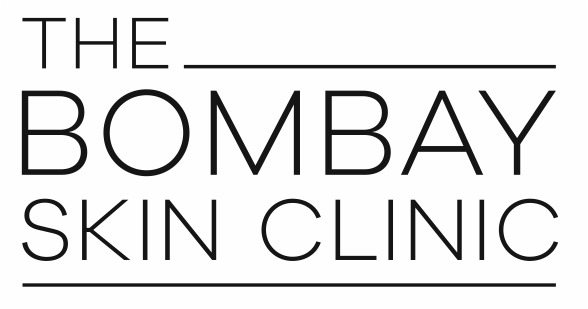Overview | Ideal candidates | Types of treatments | Causes of skin pigmentation | Future care
Dark patches on your skin can be the result of a melanin disorder. Melanin is the pigment that is responsible for the color of your skin, and when it is produced in excess, the skin becomes darker.
The condition of dark spots found on the skin, especially the face, is more commonly known as pigmentation. According to the National Centre for Biotechnology Information, skin pigmentation, or melasma, can create varied patterns of dark patches on the face in different shades of brown or a brownish-black color.
I am here to reassure that this can be treated using varied pigmentation treatments to get your natural skin color back! Let’s take a look into this in greater detail.
Who is the ideal candidate for pigmentation procedures?
To determine if someone is a good candidate for the treatment or not, I generally check their overall health. You need to be physically healthy to receive the procedure. Other than that:
- They must have less exposure to the sun
- They must not have any kind of skin condition like an active viral skin infection
- They must be able to stick to strict usage of sunscreen application
- They must be non-smokers as they show better result
- They must follow a good skin care routine
What are the different types of treatments?
There are multiple pigmentation treatment options available, which can be used depending your condition and needs.
Oral medications
- Oral sunscreens – One of the most defining factors behind skin pigmentation is sun exposure. It causes dark spots on your face if you regularly step out without proper protection. Oral sunscreen pills, which contain antioxidants like polypodium leucotomos, can help protect your skin against harmful UV rays. However, oral sunscreen is effective only when used alongside topical sunscreen lotions or creams. I must caution you: do not consider them as replacement to topical sunscreen products. The two most effective medicines are oral glutathione and oral vitamin C.
- Anti-oxidant tablets – Oxidation has been noted to alleviate melasma. Hence, for some patients, anti-oxidant tablets can be helpful to fight skin pigmentation. The elements of the anti-oxidant can also be effective in skin lightening. However, overuse of the tablet may not help you as expected, so consult with a doctor to determine the suitability of these tablets for your case.
Topical products
I recommend many topical products to my patients. These are:
- Retinoids – Retinoids are derived from Vitamin A. It is a tiny molecule that has the ability to penetrate into your skin deeply to treat it. This is why it has been used in skincare products for ages. Depending on the stubbornness of your pigmentation, prescription retinoid tretinoin or OTC retinoid formulas can be used to treat the condition. The formula, particularly, is used to treat cases of light pigmentation. Retinoids work better when combined with other drugs like Hydroxycholoroqunine and Azelaic Acid or Peptides. These help to reduce skin irritation and sensitivity. Retinoids work by increasing the exfoliation of the skin, which allows better penetration of the lightening creams. So, when properly well used under guidance, Retinoids can work really well without any side effects.
- Topical sunscreens – Melasma or skin pigmentation is often caused by sun exposure. Using a topical sunscreen product can help protect your skin from harmful sun rays and make sure that you do not develop further pigmentation spots. Depigmenting agents are also used in some sunscreen products, so they can treat already existing pigmentation spots. Those prone to skin pigmentation need to invest in a really good quality sunscreen, which protects the skin from UVA and UV B. It is advised that you use sunscreen regularly and in an ample amount. There are several options, such as gel-based, foam-based, matt-based, and compact-based sunscreens available in the market, along with sunscreen sprays. So, you should choose a sunscreen, which suits your skin the best.
- Lightening creams – Skin lightening creams can work as effective pigmentation treatments to reduce dark patches and improve skin tone. These creams may contain hydroquinone, licorice extract, N-acetylglucosamine, and vitamin B-3. Most of these creams are strong and are effective on skin pigmentation spots; they may also come in gel form. I recommend applying them a couple of times a day. Over time, the dark spots will get lighter. However, these creams have to be used as advised by me. Lightening creams contain hydroxychloroquine, Vitamin C, Mandelic Acid, Glycolic Acid, Ferulic Acid, Kojic Acid, and Azelaic Acid. You must make sure that lightening creams contain these active important ingredients. However, many plant-based derivatives are also available, which can be helpful. Hydroxychloroquine is a bleaching agent and hence should be used with caution and only if advised by me.
- Exfoliating polishes – These polishes help exfoliate dead skin cells from the topmost layer of your skin and make the treated areas appear lighter, brighter, and more evenly toned. Fine magnesium crystals are used in these polishes to help with the exfoliation process. Apart from treating pigmentation, you can use such products to clean clogged skin cells, replenish hydration and healthy lipids, and dissolve oil. The newer exfoliating polishes have glycolic acid, mandelic acid, lactic acid, and retinoic acid, which work well without over-drying the skin. You can use these scrubs thrice a week to achieve the desired results but you have to be gentle with them.
- DIY masks – You can also use facial masks made at home as pigmentation treatment. You can apply Aloe vera, a natural depigmenting compound, on the affected areas before going to bed every night and wash your face with warm water the next morning. Apple cider vinegar is another great remedy for pigmentation. Mix it with equal parts of water and apply on the dark spots. Wait for a few minutes before washing it off. It is always advised that you do a patch test to see if the method is safe for you.
In-clinic treatments
I offer many in-clinic treatments are The Bombay Skin Clinic to helps treat pigmentation. They are:
- Mesotherapy – Mesotherapy uses vitamins, hormones, enzymes, and plant extract injections to rejuvenate your skin. These are used according to your needs and help make your skin healthier and free from hyperpigmentation, as noted by the Indian Journal of Dermatology, Venereology, and Leprology. The ingredients are injected into different depths of the skin to treat the condition. At The Bombay Skin Clinic, I caution my patients that the treatment may cause scars, swelling, and some pain. However, I use the MCT mesoinjector gun for performing the procedure, which makes it painless and requires no downtime.
- Microneedling – This pigmentation treatment can reduce skin pigmentation. It is a minimally-invasive procedure where micro needles are used to create tiny puncture into the affected areas of the skin. In response, the body start to naturally heal the dark spots and lighten them. This procedure is not ideal for people who have sensitive skin, are pregnant, or have any kind of skin infection. At The Bombay Skin Clinic, I use the Dermapen 4 device, the latest in microneedling technology.
- Chemical peels – Light and medium chemical peels are used to exfoliate dead skin cells to resurface a healthier, brighter, and smoother layer of skin. The chemical agents used in these peels are applied on the targeted area to lighten darkened spots. The new skin layer will have reduced pigmentation and help you appear younger. The chemical peels I most commonly use at The Bombay Skin Clinic are alpha-hydroxy acid, glycolic acid, trichloroacetic acid, yellow peel, azelaic peel, and black peel. Newer peels like ferulic acid peel, mandelic acid peel, and tranexamic peel also work well for pigmentation treatment. Peels should be the first choice while treating pigmentation but choosing the right peel is also important. The peels should be of high standards and safe for them to be effective without causing any side-effects. So, you should always do the procedure in a dermatologist’s clinic and inquire about the brands of the peels used.
- IPL Therapy – IPL, or Intense Pulse Light therapy, uses non-ablative lasers to treat the affected areas. It improves collagen production, which leads to fast healing of your skin. Apart from curing pigmentation, the procedure also treats enlarged pores and wrinkles. I recommend multiple IPL sessions to get the best result. The one thing that you must keep in mind is that this procedure works best for fair-skinned people.
- Microdermabrasion – Microdermabrasion is an effective method of treating skin pigmentation. To perform this procedure, a handheld medical device with an abrasive attachment or wire brush is used to gently remove the epidermis. After multiple sessions, the dark spots will be effectively reduced. My patients who undergo this treatment at The Bombay Skin Clinic report seeing quick and long-lasting results. However, the procedure is always combined with other treatments like peels, facials, or lasers.
- Medi-Facials – Medi-facials are medical grade facials, often used to treat skin pigmentation as they have the ability to go deep into your skin and improve skin quality and health. Medi-facials moisturize your skin and make it soft. You regain a fresher look with brighter, spotless skin. There are many different kinds of medi-facials used, depending on your condition. Some that I offer at The Bombay Skin Clinic are The Bombay Pumpkin Facial, The Bombay Intensive Vitamin C Facial, The Bombay Glass Skin Facial, and photodynamic procedures like LED treatment.
- Laser peel – The laser peel method uses laser wavelength to target the areas on your skin with high pigment concentration. The heat energy generated from the laser destroys the affected skin cells to reduce the dark spots effectively. Any chance of side effects from this treatment is minimal, and there is no downtime either. I offer the Bombay Hollywood Laser Peel treatment at The Bombay Skin Clinic. I also offer the Spectra XT Toning treatment that uses a highly advanced Q-switched laser machine to penetrate the skin with laser light for depigmentation. Patients have seen marked improvements in their pigmentation after treatment.
What types of skin conditions are treated for pigmentation?
Pigmentation treatments can be used to treat a lot of different skin conditions along with dark spots. As there are multiple procedures that work effectively for pigmentation, you get additional benefits, too. The procedures can treat sun damage, sun tan, freckles, solar lentigines, frictional pigmentation (pigmentation from constant rubbing), skin inflammation, reaction to a drug, certain medical conditions due to increased pigmentation, age spots, and different kind of scars. I choose the right procedure depending on your skin tone and after a thorough assessment of your medical condition to make sure that the best result can be achieved.
What are the main causes of skin pigmentation?
The main two reasons behind melasma are hormonal issues and prolonged sun exposure, as confirmed by Harvard Health Publishing. A hormonal disorder can be caused by certain medical conditions and pregnancy. There are also certain medicines that can cause pigmentation. If you have Addison’s disease, it can result in hyperpigmentation on areas of sun exposure. I always strive to determine the right cause of your pigmentation before charting out a safe and effective treatment plan.
What should you expect during consultation with the doctor?
During the first consultation, I try to understand the cause of your pigmentation and blotchy skin. It can be done by studying your medical history and performing certain physical exams. If required, I may prescribe a skin biopsy to understand your condition even better. As already mentioned, pigmentation treatments can be done in different ways, including the use of medicine, lasers, and peels. Depending on your condition, I will suggest the right course of action.
What future self-care should you follow?
After receiving each specific type of treatment, I advise my patients to follow certain self-care measures. You must make sure to take extra care of your skin in order to keep it healthy and maintain your natural skin tone. The American Academy of Dermatology suggests that you must apply sunscreen regularly, as long as sun exposure is a reason behind pigmentation. You should also wear sunglasses and a hat with wide brim. You should also invest in mild skincare products as harsh chemicals can cause skin damage, too. Also, avoid waxing the treated skin.
Closing thoughts
Excessive exposure to the sun, pregnancy, or some hormonal change can cause skin pigmentation. While this condition is not harmful, the resulting dark spots can mar your natural appearance. However, there is no reason to worry about this. I am here to help you diagnose the cause and help you get rid of unwanted dark patches for good with the right procedure.
References
- National Centre for Biotechnology Information: https://www.ncbi.nlm.nih.gov/pmc/articles/PMC2807702/
- Harvard Health Publishing: https://www.health.harvard.edu/blog/dark-patches-on-the-face-may-be-melasma-2018101915058
- American Academy of Dermatology: https://www.aad.org/public/diseases/a-z/melasma-self-care
- Indian Journal of Dermatology, Venereology, and Leprology: http://www.ijdvl.com/article.asp?issn=0378-6323;year=2007;volume=73;issue=1;spage=60;epage=62;aulast=Vedamurthy

 Dr. Batul Patel is a celebrity dermatologist and the medical director of The Bombay Skin Clinic an award winning clinic located in South Mumbai & Bandra. She is a passionate and dedicated dermatologist with expertise in all fields of dermatology, trichology and aesthetic dermatology. She has been practicing for more than a decade. Her range of expertise include emsculpt NEO, coolsculpting, fillers, acne treatment, lasers, skin rejuvenation, hair loss, hair transplant, PRP & pigmentation treatments.
Dr. Batul Patel is a celebrity dermatologist and the medical director of The Bombay Skin Clinic an award winning clinic located in South Mumbai & Bandra. She is a passionate and dedicated dermatologist with expertise in all fields of dermatology, trichology and aesthetic dermatology. She has been practicing for more than a decade. Her range of expertise include emsculpt NEO, coolsculpting, fillers, acne treatment, lasers, skin rejuvenation, hair loss, hair transplant, PRP & pigmentation treatments.